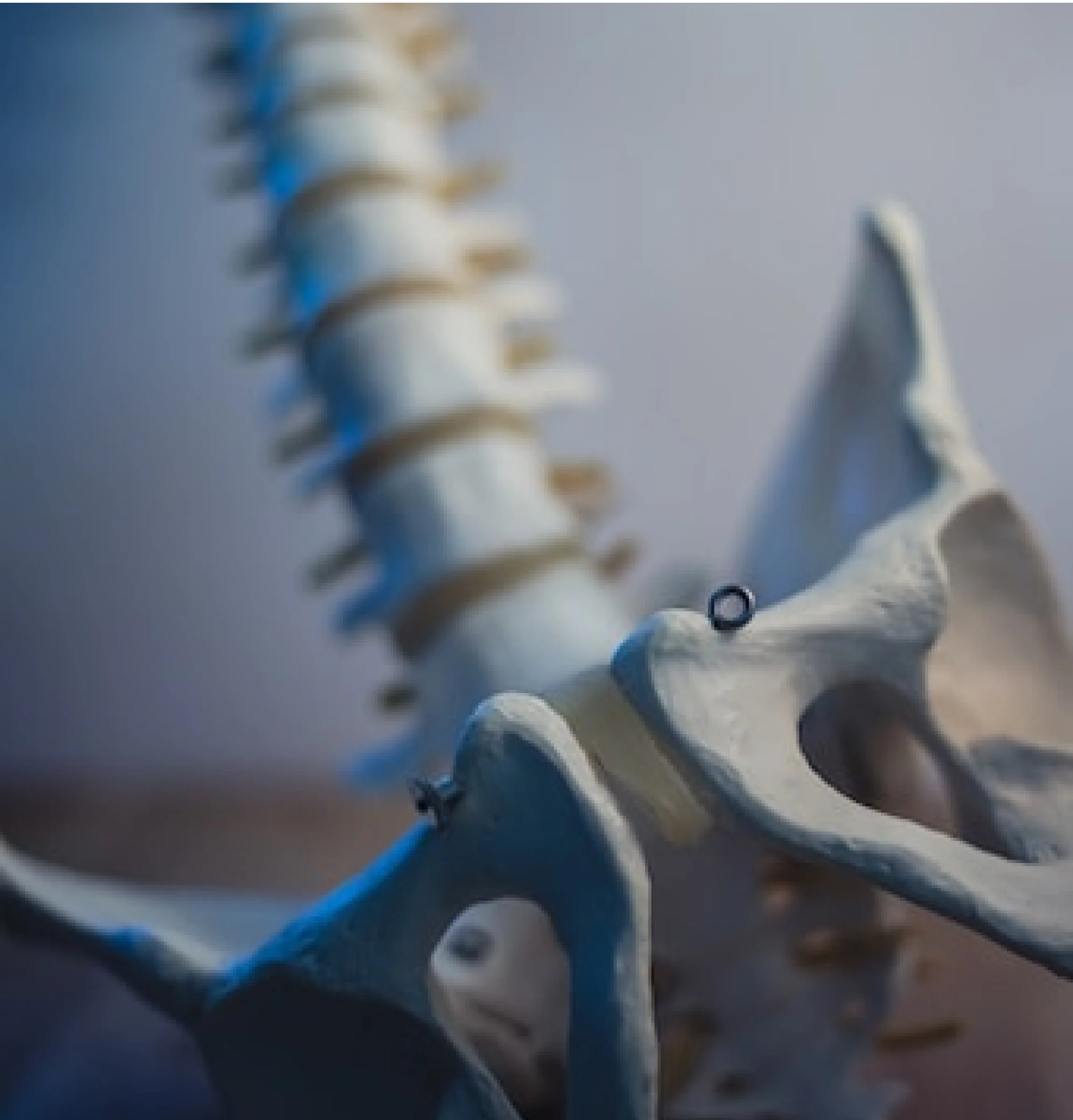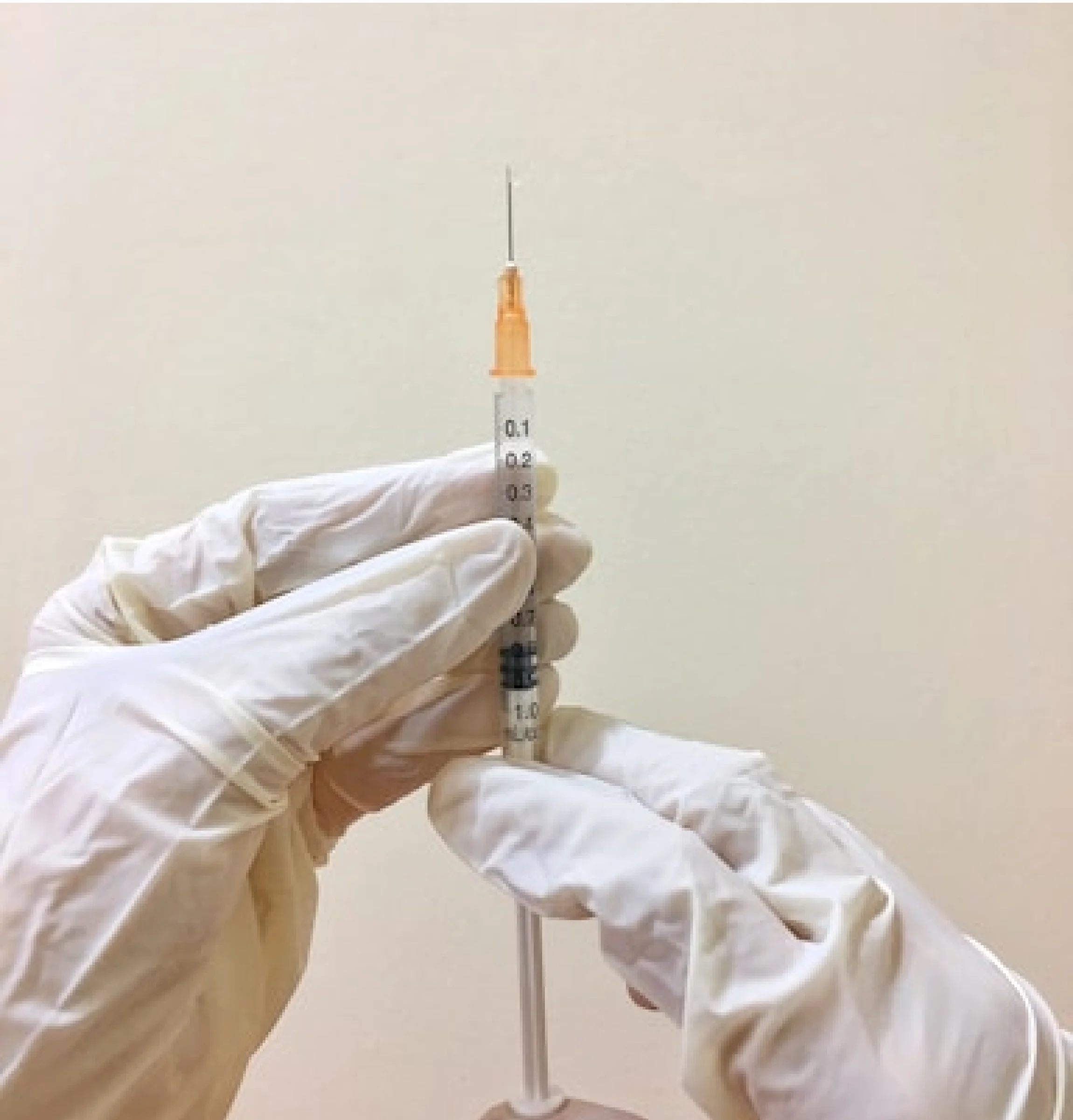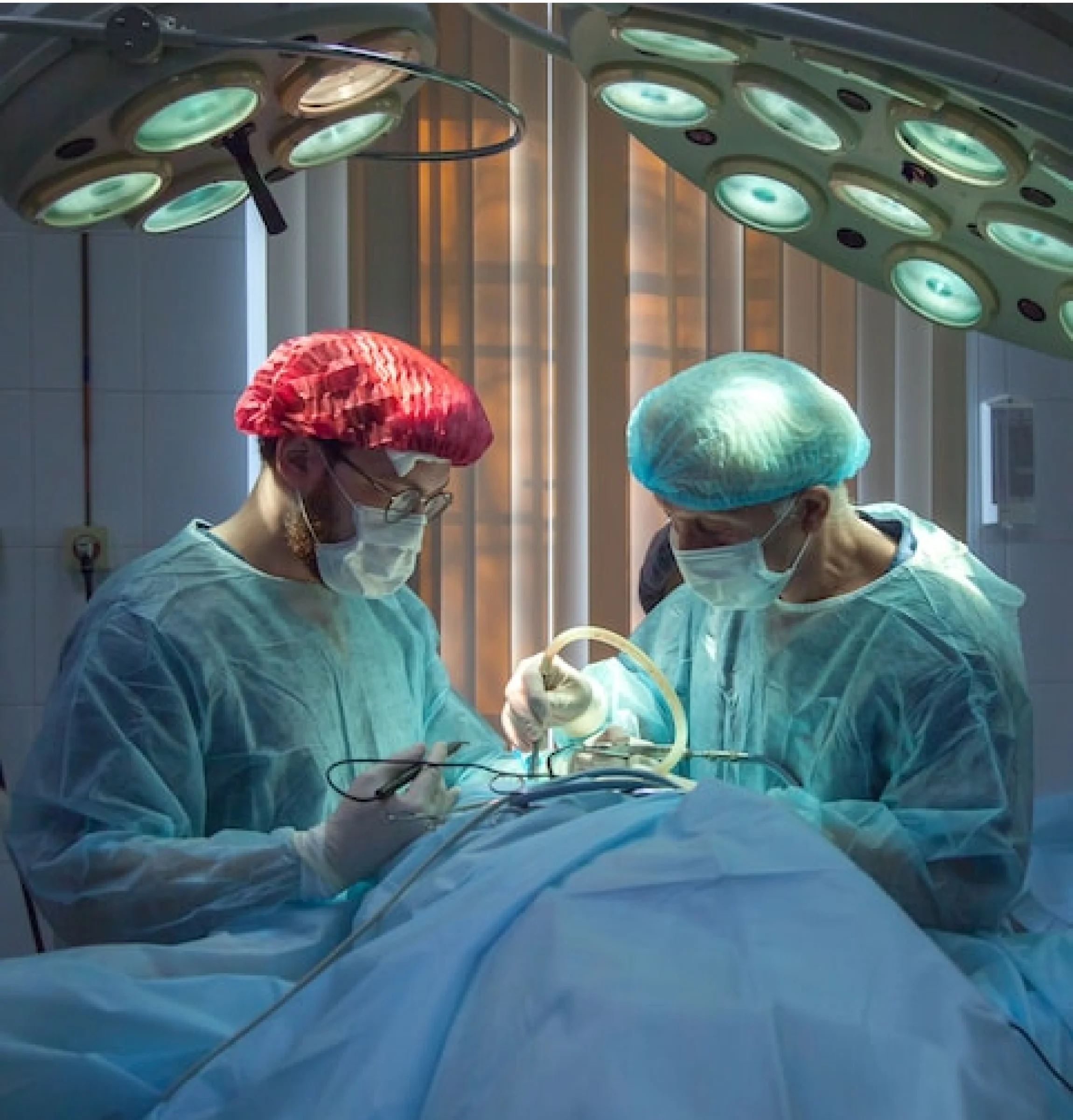Bux Pain Management
Board Certified Anesthesiologist located in Lexington, Cynthiana, & Danville, KY
Neurostimulation is a treatment for chronic pain that can provide lasting relief without using addictive opioid drugs. With more than 20 years of experience, Anjum Bux, MD, is dedicated to practicing cutting-edge pain management medicine at Bux Pain Management. At his offices in Lexington, Cynthiana, and Danville, Kentucky, Dr. Bux offers neurostimulation to patients seeking long-term relief from chronic pain. To learn more about neurostimulation, call Bux Pain Management today, or schedule an appointment online.
Neurostimulation Q & A
A Gentle Yet Effective Way to Ease Your Physical Pain
Living with acute or chronic pain can significantly decrease the quality of your life. If you have tried interventions before but with little to no effect, it’s essential to know that living a pain-free life is still possible for you. Medical advancements like neurostimulation, also known as neuromodulation, can effectively manage pain associated with a chronic condition. At Bux Pain Management, we specialize in diagnosing and effectively providing neurostimulation therapy in Danville, Lexington, and Cynthiana, Kentucky.
By using electrical impulses to modulate nerve activity, this therapy offers a novel approach to pain management and the treatment of several neurological disorders.
If you’re looking for minimally invasive yet highly effective options to block pain, neurostimulation therapy may be the ideal treatment for you. Always seek treatment and consultation from a board-certified physician to ensure this option is appropriate for your specific condition and health needs.
What Is Neurostimulation Therapy?
Neurostimulation, also referred to as neuromodulation, therapy is a medical treatment that uses a neurostimulator that emits electrical impulses to modulate nerve activity and manage chronic pain. Essentially, this therapy blocks the neural pathways that run through your spinal column, which are responsible for sending pain signals to your brain, and reduces your perception of pain.
This therapy is often used for patients who suffer from chronic pain conditions that have not responded well to conventional treatments.
Neuromodulation therapy involves implantable neurostimulation systems or devices that are typically implanted under the skin. This device delivers electrical pulses to specific nerves or areas of the spinal cord.
A more advanced form of this technique, called dorsal root ganglion or DRG stimulator, directly targets the exact nerve that causes your chronic pain instead of traveling through the spinal column alone. It zeroes in on difficult-to-reach nerves and blocks the pain right at its gateway (DRG) before traveling along the spinal column.
Some conditions where neurostimulation is making great strides include:
Parkinson’s Disease
Deep Brain Stimulation (DBS) is a form of neurostimulation that has been particularly effective in managing the symptoms of Parkinson’s disease. Here, electrodes are implanted in specific areas of the brain that control movement, helping to reduce tremors, rigidity, and other motor symptoms.
Dystonia
By targeting those areas of the brain responsible for muscle control, neuromodulation has also been able to alleviate the involuntary muscle contractions associated with dystonia. Many patients have experienced improvements in muscle function and reduced painful spasms.
Obsessive Compulsive Disorder (OCD)
If you have OCD, DBS can help by modulating brain circuits involved in obsessive and compulsive disorders, providing relief when traditional therapies fail.
Migraines
Peripheral nerve stimulation (PNS) has shown promise in reducing the frequency and intensity of migraines. By targeting specific peripheral nerves in your head and neck, the therapy can alleviate the chronic pain of migraines.
Peripheral Neuropathy
Peripheral nerve stimulation (PNS) can be used to treat peripheral neuropathy, a condition where damaged peripheral nerves cause pain, numbness, or tingling. PNS involves placing electrodes along the affected nerves to send mild electrical currents, which create a pleasant tingling sensation. This interrupts pain signals to the brain, helping to reduce or block chronic pain associated with peripheral neuropathy.
Major Depressive Disorder
Neuromodulation is a promising new treatment for treatment-resistant major depressive disorder. Techniques like deep brain stimulation (DBS) and vagus nerve stimulation (VNS) target brain areas involved in mood regulation, offering relief when other treatments like medications have failed. These treatments are often used alongside psychiatry to manage symptoms such as stress, anxiety, and other mental disorders, providing a comprehensive approach to mental health care.
Chronic Back Pain
Techniques like spinal cord stimulation (SCS) work by delivering mild electrical pulses to the spinal cord, blocking pain signals from reaching the brain. This can help manage persistent back pain caused by conditions such as degenerative disc disease or nerve damage. By targeting the source of the pain, neurostimulation offers long-term relief without the need for invasive surgery, allowing many patients to reduce reliance on medicine like pain medications and associated substance abuse issues.
Fibromyalgia
Neurostimulation, especially transcranial magnetic stimulation (TMS), can help manage symptoms of fibromyalgia, a condition marked by widespread pain and fatigue. TMS works by targeting areas of the brain involved in pain processing, helping to reduce pain and sometimes improving other symptoms like fatigue and mood. While it doesn’t cure fibromyalgia, neurostimulation offers an option for patients who have not found relief through traditional treatments like medications or physical therapy.
Types of Neurostimulators Available at BUX Pain Management
BUX Pain Management, a Kentucky-based pain management center with over 20 years of experience, has some of the most experienced professionals in the field of long-term pain management.
Led by expert physician Dr. Bux, our team of certified health professionals are committed to offering you a wide range of advanced neurostimulation options specifically tailored to effectively manage your chronic pain. Our selection includes:
Implanted Neurostimulators
This is the broad category for implanted neurostimulators designed to treat chronic pain and neurological disorders like Parkinson’s disease and epilepsy. It is a viable option for patients with conditions that do not respond well to conventional treatments.
Spinal Cord Stimulators
SCS also falls under the broad implanted neurostimulators designed primarily for pain management. They operate by targeting the spinal cord, where they effectively block pain signals from reaching the brain. Spinal cord stimulators can offer significant relief to patients suffering from chronic pain conditions.
Nerve Stimulators
Nerve stimulators function quite similarly to spinal cord stimulators but with a more targeted approach. Instead of placing electrodes along your spinal column, nerve stimulators are directed to specific nerve cells responsible for neuropathic chronic pain. By blocking the pain signals at their source, these neurostimulator devices prevent the signals from reaching the spinal cord and brain. An example of this targeted approach is Dorsal Root Ganglion (DRG) stimulators.
Dorsal Root Ganglia
DRG stimulators specifically modulate pain signals at the entry point to the spinal column or epidural space. DRG is responsible for transmitting signals from the peripheral nervous system to the central nervous system.
Because a dorsal root ganglion implant sends impulses directly to the dorsal root ganglia, it is suitable for cases of complex regional pain syndrome (CRPS) or severe pain and hypersensitivity of the body’s extremities, pelvic pain, groin neuralgia and other nerve pain involving isolated parts of the body.
Vagus Nerve Stimulation
The vagus nerve is a cranial nerve that stems from our brains. Vagus nerve stimulation, or VNS, is ideal for people suffering from chronic pain, treatment-resistant epilepsy, and depression. It works by sending regular, mild electric pulses to the brain via the vagus nerve through a device implanted, similar to a pacemaker.
Peripheral Nerve Stimulation
Peripheral nerve stimulation, or PNS, is done by placing electrodes along the course of peripheral nerves to regulate pain. Its mechanism involves sending a mild electrical current to the brain to stimulate a pleasant tingling sensation that causes the brain to shut off pain signals.
Applications of Neurostimulators
Spinal Cord Stimulator for General Use
SCS is a neurostimulator specifically designed to deliver therapeutic electrical pulses directly to the spinal cord. It is used to manage a range of chronic pains across various parts of the body, including the back, legs, and arms.
SCS offers a safer alternative to pain medications and opioids, which can have adverse side effects and the potential for dependency. By customizing the stimulator’s settings, SCS can be tailored to address your specific pain issues and needs, ensuring personalized and effective pain relief for the long term.
Spinal Cord Stimulator for Neck Pain
This SCS can also target neck pain via electrical impulses. These impulses can be fine-tuned to address chronic pain in specific cervical regions in the body by placing the electrodes strategically and configuring them to target the cervical nerves.
Benefits of Neurostimulation Therapy
Neurostimulation therapy is a cutting-edge treatment that can provide patients with a wide range of benefits, including:
Significant Pain Relief
Neurostimulation significantly alleviates pain where conditions have become resistant to conventional treatments. It gives you a chance to get rid of your pain without risking addiction to opioids or experiencing short-term relief.
Reduces Reliance on Pain Medications
By opting for neurostimulators, you eliminate the need to depend on pain medications, which often come with adverse side effects. Neuromodulation therapy may only cause minimal discomfort like tingling, random jolts, irritation, swelling, fluid discharge, and mild soreness in the implantation site.
Improves Quality of Life
A pain-free life enables you to do more and be more because you are not limited by excruciating pain. You can undertake activities like work, sports, and recreation without being weighed down by chronic pain in your body.
Customizable Treatment
Neurostimulators can be adjusted based on the patient’s feedback and specific pain management needs. As such, you can rest assured that there is a more precise targeting of your pain-causing nerve instead of a generic way of treating your condition.
Minimally Invasive with Low Risk of Complications
BUX’s neurostimulation therapy is a minimally invasive outpatient procedure that uses a discreet device. Depending on the target and modality, some approaches are entirely non-invasive, such as transcranial magnetic stimulation, which utilizes a magnetic coil positioned on a patient’s head.
As such, there is a low risk of complications because the device isn’t embedded deep into the brain. It only regulates peripheral or central nerve pathways.
Long-lasting Effects
Once a permanent neurostimulator is installed, the effects can be long-term. The device typically lasts for several years before a battery replacement or adjustment is needed. The devices are designed to be safe, durable, and easy to maintain.
Neurostimulation Therapy Procedure
At Bux Pain Management, we prioritize a thorough and personalized approach to your care.
The process begins with a comprehensive consultation with one of our pain specialists, who will begin by examining and evaluating the history, location, and cause of the pain.
Our pre-procedure preparations may include conducting imaging studies to pinpoint the optimal location for the neurostimulator placement. If necessary, we will carry out a trial phase where a temporary neurostimulation device will be implanted.
Pre-Operative Preparations
Our BUX team will provide you with an outline of do’s and don’ts as you prepare for your treatment. These include not taking any blood thinners and not drinking or eating the night before and in the morning of your procedure to avoid complications.
Anesthesia
The doctor will be administering local anesthesia or sedation to keep you rested and comfortable during the procedure.
Implantation
The doctor will create a small incision and place the neurostimulator near the spinal column or the targeted nerve area. The thin wire of electrodes is placed percutaneously and carefully along the spinal cord’s dorsal columns or epidural space.
Device Configuration
After placement, the device is tested, and its intensity, frequency, and duration settings are programmed to customize the stimulation based on the patient’s specific pain areas and intensity.
Closure and Recovery
Once the optimal setting is set, the incision will be closed up. The stimulator will be turned on once you wake up from your sedated state. You will then be monitored for any immediate postoperative complications. The whole procedure usually takes about 30 to 90 minutes. Once the doctor clears you, you will be sent home with instructions to refrain from strenuous activities like stretching, lifting, twisting, and getting your incision wet.
If it is a trial phase, you will be asked by the doctor to rate your pain relief post-op and come back for assessment if you’re a good candidate for a permanent spine stimulator.
Who Needs Neurostimulation?
Patients whose pain or neurological condition does not respond to conventional treatments can benefit significantly from neurostimulation. This therapy brings relief and improvement to conditions like chronic back pain, nerve pain, spinal cord injury, pain after surgery, failed back surgery syndrome, and complex regional pain syndrome.
It also helps patients with neurological disorders like Parkinson’s Disease, dystonia, OCD, refractory epilepsy, depression, and migraine by managing tremors and involuntary muscle contractions and modulating some areas of the brain.
Why Choose Bux Pain Management for Neuromodulation?
Bux Pain Management offers personalized treatment for patients suffering from chronic or acute pain. We have been, for many years, trusted pain management expert in the region, renowned for our experienced medical staff, minimally invasive techniques, and life-changing results.
Our patients find relief through neurostimulation and other advanced treatments thanks to Dr. Bux’s extensive expertise, a history of successfully helping in chronic pain management, and a holistic, tailored intervention approach. We are dedicated to alleviating pain without putting our patients at risk.
It’s time to live a pain-free life and reach your full potential.
Schedule an appointment today via a phone call or online booking and experience relief from your physical pain in the most compassionate and reassuring way.
FAQs
What are the potential side effects of neuromodulation therapy?
Neurostimulators are generally safe, but like any medical procedure, it may pose potential risks like infection, bleeding, skin irritation or pain in the implantation site, tingling sensations that patients may not be able to adapt to, stomach discomfort, headaches, and overstimulation. It may also limit activities that involve pressure, like scuba diving.
How long does the procedure take place?
The whole procedure takes about 30 minutes to 90 minutes.
How does neurostimulation therapy work?
The implanted neurostimulator emits electromagnetic impulses along the central and peripheral nerves to modulate pain signals before they reach the brain.
How much does the procedure cost?
The cost of neurostimulation therapy depends on the individual patient’s condition and requirements, the clinic, the device, and the credentials of the healthcare professional. Approximately, costs may range from USD 10,000 to USD 50,000.
Is Neurostimulation the same thing as functional electrical stimulation?
Neurostimulation and functional electrical stimulation (FES) are related but different. Neurostimulation broadly refers to using electrical or other stimuli to affect the nervous system, often for pain or neurological disorders. FES is a specific type of neurostimulation that targets muscles to restore movement in cases of paralysis or weakness.
Is neuromodulation used for seizure recovery?
Yes, neuromodulation can help some people who have had seizures, particularly those with epilepsy that doesn’t respond well to medication. Techniques like vagus nerve stimulation (VNS) or deep brain stimulation (DBS) can reduce the frequency and severity of seizures by modulating abnormal brain activity. These treatments are usually considered when traditional approaches, like anti-seizure medications, are not effective.
Does neuromodulation require an MRI (magnetic resonance imaging)?
Neuromodulation itself does not require an MRI. However, MRI may be used before certain neuromodulation procedures, such as deep brain stimulation (DBS), to help guide electrode placement with precision.
Can neuromodulation help avoid neurosurgery?
In some cases, neuromodulation can help avoid neurosurgery. Techniques like transcranial magnetic stimulation (TMS), vagus nerve stimulation (VNS), and spinal cord stimulation (SCS) can manage conditions like chronic pain, depression, or epilepsy without the need for more invasive surgery. While it depends on the specific condition and its severity, neuromodulation offers a less invasive option that may reduce or delay the need for surgical intervention.
Can neurostimulation treat neuropathic pain?
Yes, neurostimulation can be an effective treatment for neuropathic pain. Techniques like spinal cord stimulation (SCS) and peripheral nerve stimulation (PNS) help manage chronic pain by disrupting pain signals before they reach the brain. These treatments are often used when medications or other therapies fail to provide relief, especially for conditions like diabetic neuropathy or nerve injury.
Can neurostimulation help with arthritis pain?
Yes, neurostimulation can help manage chronic pain from osteoarthritis and rheumatoid arthritis, especially when other treatments fail. Techniques like spinal cord stimulation (SCS) and peripheral nerve stimulation (PNS) block pain signals to the brain, offering relief. While it doesn’t address joint damage or inflammation, it can significantly reduce pain perception.
Put an End to Your Pain
Experience a life free of pain with Bux Pain Management. Get in touch with us to schedule a consultation so you can start your journey towards enjoying a pain-free life.









